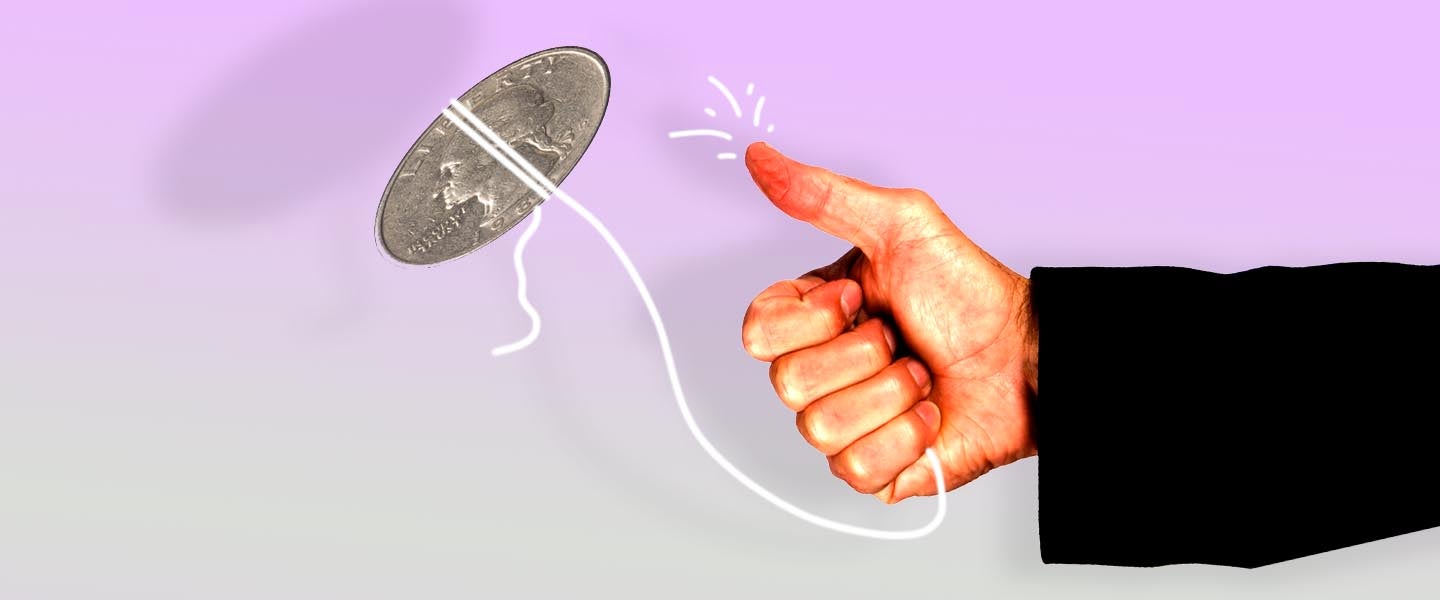There was plenty of drama surrounding the weird app that botched the Iowa Caucus this week. But as a Brit watching the whole thing play out on YouTube streams and Twitter, there was one question I kept asking myself: Why are so many caucuses decided by coin toss?
Here’s your Iowa democracy in action – a coin toss to determine who gets the last delegate out of this #IowaCaucus precinct after Buttigieg and Klobuchar tied. Buttigieg won. pic.twitter.com/1s4zTE0u96
— Anthony Zurcher (@awzurcher) February 4, 2020
In 2016, for example, 13 Iowa caucuses were decided between Hillary Clinton and Bernie Sanders via coin toss — something that led to conspiracy theories that the coin flips themselves were rigged in favor of Clinton. Similar claims were made this week as well:
I'm not saying it's #DNCRigged or that the #DNCisCorrupt but have you seen this "coin toss"? https://t.co/cnYYaK8tbc
— Bees Knees (@OYesIsaidit) February 5, 2020
Enjoy this video of a completely fair and neutral coin toss.#IowaCaucusDisaster #DNCRigged pic.twitter.com/ZCMMGiGpnu
— ??????? (@HajjiAndreas) February 5, 2020
This is what qualifies as a “blind coin toss” for the DNC.
Oops what do you know, #MayorCheat defies all odds and wins >85% of all coin tosses! pic.twitter.com/6UA5OTUEyx
— ? Theo ? (@seizethemeanies) February 4, 2020
“You can see in one of the videos that the guy tossing the coin is carefully looking at it,” says Theo, a 25-year-old pseudonymous Bernie Sanders supporter in Chicago. Theo admits that he “might sound insane,” but based on what he experienced watching the 2016 election, “I wouldn’t put it past the DNC to rig the coin toss as well.”
But can you rig a coin toss? After all, it’s long been considered the fairest way possible to decide a split decision: Theoretically, there’s an even (or “50/50”) chance either person could win.
The thing is, statistically speaking, coin tosses aren’t exactly a 50/50 spread. In 2012, Persi Diaconis, a math professor at Stanford University (and, it should be noted, a professional magician), argued exactly even odds only occur in situations of cetirus paribus, or when every other testing condition is equal and optimal. Some of the external factors Diaconis believed could affect a coin flip: the temperature, the velocity the coin reaches at the highest point of the flip and the speed of the flip. He found, then, that the outcome of a coin flip was much closer to 51/49 — with a bias toward whichever side was face-up at the time of the flip.
Harvard mathematician Michael Mitzenmacher supports Diaconis’ analysis, purporting that if a coin is “loaded” — i.e., one side of the coin is slightly heavier than the other — an outcome of 51/49 is more likely (especially when flipped in the air and caught by hand).
Which brings me back to the tinfoil-hat realm: Does this mean that you could “load” a coin yourself, or game it to optimize however it’s loaded naturally in your favor?
The shortest of answers: Probably not.
Like with American quarters (75 percent copper and 25 percent nickel), most coins in the world are made from copper and nickel (though some coins in Europe are made with less copper and more bronze) — lightweight enough metals that physicists say it would be practically impossible to manipulate them within a coin that would purposefully skew the odds. “You’d need to have a material of coin that was either so light or so heavy that even a minuscule imbalance in weight can affect the outcome,” says Martin Bowell, a master’s student in material physics at University College London.
One such material might be gold, which is more than double the weight of copper, brass, nickel and zinc. Gold coins are a rarity — you’re more likely to find them in a collectors’ auction than any kind of bank — but because many have special embossing on one side (usually of a monarch, or to represent a historical event), it’s likely that one side will always be slightly heavier than the other, according to Nick Samuels, an auctioneer who values precious coins for Sovereign Rarities in London. “Partly, too, the imbalance with old coins came from the technology that was used to mint them,” he explains. “The gold coins would have to be rolled out several times, and when they were pressed by the hydraulic machines, some might have ended up getting a bit more metal in the [heads] part of the coin, where there are more details.”
And while this could occur during modern coin production, Samuels says it would be both rare and inconsequential in the context of a coin flip. In fact, he adds, it’s probably among the dumbest ways to rig an election. “You’re talking about less than an eighth of a gram,” he says, laughing. “Even with the oldest coins, it’s unlikely that anyone can manipulate a toss — no matter how hard they were deliberately trying to cheat.”

